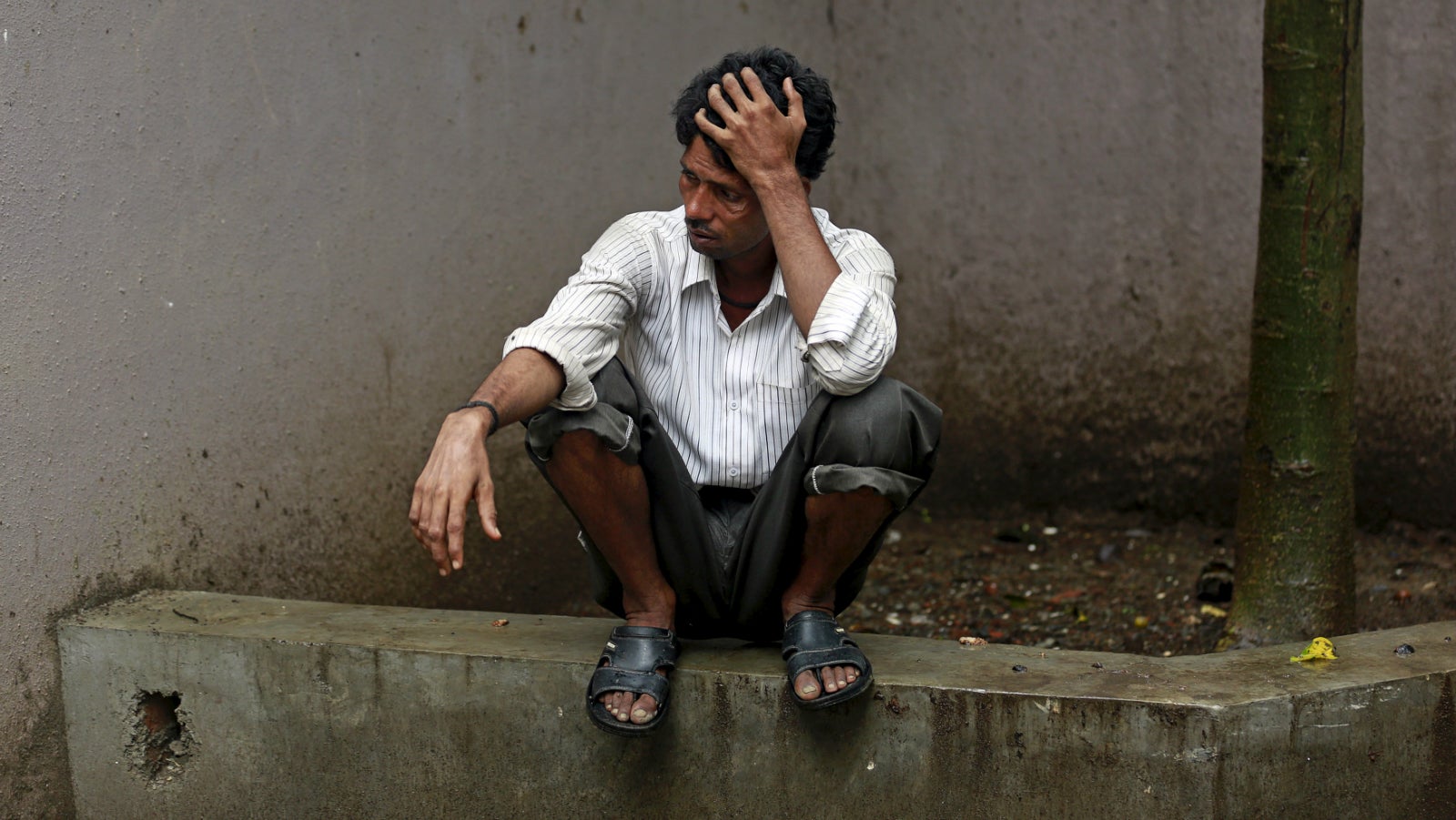Why do poor Indians continue to drink deadly moonshine?
At least 97 slum-dwellers in Mumbai died between June 18 and June 21 after drinking illicitly brewed liquor—with 46 people still undergoing treatment at various city hospitals.


At least 97 slum-dwellers in Mumbai died between June 18 and June 21 after drinking illicitly brewed liquor—with 46 people still undergoing treatment at various city hospitals.
The tragedy occurred after scores of slum residents in Malwani, a northern suburb, bought and consumed methanol-infused hooch from local bootleggers. The concentration of toxic methanol in the hooch was high enough to send more than a hundred consumers to hospitals with complaints of breathlessness, stomach aches and failing vision. The death toll is now higher than that of Mumbai’s last major hooch catastrophe in 2004, when 89 people had died in Vikhroli.
So far, the police has arrested three suspected bootleggers and suspended eight Malwani policemen for negligence, as family members of the deceased alleged that the local police had been complicit in allowing illicit liquor brewers to flourish.
Despite the staggering death toll, nothing about the Malwani tragedy is surprising or unheard of. Mass fatalities caused by poisonous hooch are reported nearly every year from different corners of the country—and hundreds of Indians have died in the past ten years alone.
In December 2011, for instance, hooch killed 126 people in rural West Bengal. The death toll in Karnataka hit 180 in May 2008. And in Gujarat, where the sale of alcohol is completely prohibited, 136 people died of spurious liquor in Ahmedabad in July 2009. The incident pushed the Gujarat government to introduce the death penalty for hooch makers and vendors if its consumption led to death. In the four years since the legislation came into force, however, no one has been awarded the death penalty so far.
Dirt cheap
Unlike neighbouring Gujarat, which enforces prohibition, Maharashtra allows liquor to be brewed—and on the face of it, it doesn’t cost much to consume legal “country liquor” (so named to distinguish it from whiskey, gin and other forms that are designated under the wonderfully paradoxical category of “Indian Made Foreign Liquor”).
The current government rate for legal country liquor is Rs45 ($0.7) a 180 ml bottle—a rate that was increased from Rs33 ($0.5) just three months ago after the state government decided to hike the excise duty on country liquor to bring in more revenue. But Malwani residents were buying locally-brewed hooch for Rs20 or Rs30 for a 180 ml bottle.
But is cheap pricing and bootleggers’ greed the sole reason for the loss of so many lives? Some believe this is the most plausible explanation.
“Spurious liquor is brewed in obscure places and attracts no taxes or duties, so even if there is no quality control, it is much cheaper,” said Y.P. Singh, a former police officer from Mumbai. Because illicit brewing is also unscientific, hooch brewers inadvertently mix excessive amounts of methanol in their liquor every once in a while, leading to mass deaths.
Bootleggers cater to a perpetual demand for cheap alcohol among habitual users and addicts, and the illicit industry thrives only because law enforcers at the local level allow it to, Singh admits. “The police get haftas [weekly bribes] for letting illegal brewing joints run,” he said. “They could crackdown on it if they wanted to, but this is a very lucrative business with a very high turnover.”
The only meaningful action that can be taken in this context, Singh believes, is to crack down on local beat officers in the police department during regular raids by the central police branch—not merely suspend officers after a tragedy has taken place. “Right now, during periodic raids on bootleggers, it is only hooch brewers who are caught, not local policemen.”
How cheap does it have to be?
But there is another school of thought—widespread among prohibition supporters in Maharashtra—that mere cheap pricing cannot explain the massive demand for illicit hooch.
“People demand alcohol because they get addicted, and I have seen people seek out cheap hooch even if they can afford licensed country liquor,” said Vikas Amte, a social activist from Maharashtra’s Chandrapur district and the son of human rights activist, Baba Amte. “This is because hooch is a stronger drink and addiction makes people want a bigger kick whenever they drink.”
This April, Chandrapur became the third district in Maharashtra—after Wardha and Gadchiroli—to go completely dry and ban the sale of all alcohol, and Vikas Amte was one of the frontrunners of the movement to push for this ban. “Even before the ban on alcohol in Chandrapur, hooch would be smuggled in from neighbouring states, and this continues.”
Paromita Goswami, another Chandrapur-based activist with the non-profit Shramik Elgar, has a contrary view: Maharashtra’s three dry districts, she says, have never really faced any controversies or tragedies related to hooch, and the illicit alcohol seized from these districts is actually licensed liquor brought in from places where it is legal.
“Why is it that hooch deaths are happening in cities like Mumbai, where country liquor is available for as cheap as Rs45 and people are so firmly against prohibition?” said Goswami. The issue is not of pricing, she believes, but of addiction made widely acceptable.
“Rs45 for a bottle is not a high price at all—how much cheaper does it have to be?” she said. “If you cannot afford food, you don’t switch to poison. So those who cannot afford country liquor must then drink less, not switch to hooch.”
This post first appeared on Scroll.in.